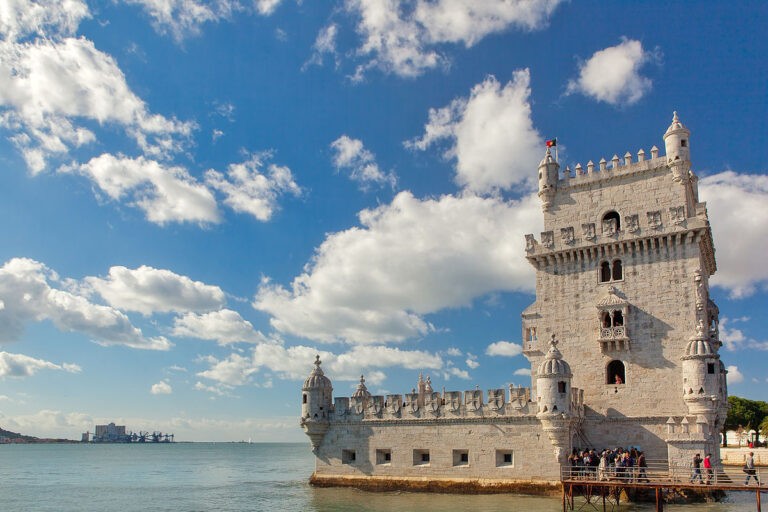Food
Food Categories, unlike tags, can have a hierarchy. You might have a Jazz category.
Search
Food Categories, unlike tags, can have a hierarchy. You might have a Jazz category.
Review Categories, unlike tags, can have a hierarchy. You might have a Jazz category.
Guides Categories, unlike tags, can have a hierarchy. You might have a Jazz category.
Travel Categories, unlike tags, can have a hierarchy. You might have a Jazz category.
![]() By Quppy
By Quppy

The capital of Portugal, Lisbon, is located at the point where the mouth of the Tagus River flows into the Atlantic Ocean. As a tourist destination, the coastal city is as rich and varied as the country’s long history. From the ruins of a Moorish castle perched on one of the city’s seven hills, to an outdoor cafe nestled against an ancient Visigothic wall, traces of Lisbon’s colorful past are everywhere.
Lisbon is justifiably proud of the role it played in Portugal’s Age of Discovery, and monuments commemorating the travels of explorers like Vasco da Gama are among Lisbon’s most important attractions. While Western Europe’s oldest city has taken steps to overhaul its transport system, modernize the city center and redevelop the waterfront, the charm of Lisbon’s oldest neighborhoods is what attracts visitors the most.
Praca do Comercio, one of the main waterfront attractions in central Lisbon, is a crowded central square surrounded by elegant 18th-century buildings. The Portuguese Don José I settled here until the 1755 earthquake turned it into ruins. Locals still call the area Terreiro do Paco, or the courtyard of the royal palace. In the center of the square stands a monument depicting the king on horseback. A large triumphal arch, built in 1873, anchors the north side. Nearby hotels, shops and restaurants make the sunny square a popular destination for visitors exploring Lisbon’s picturesque waterfront.
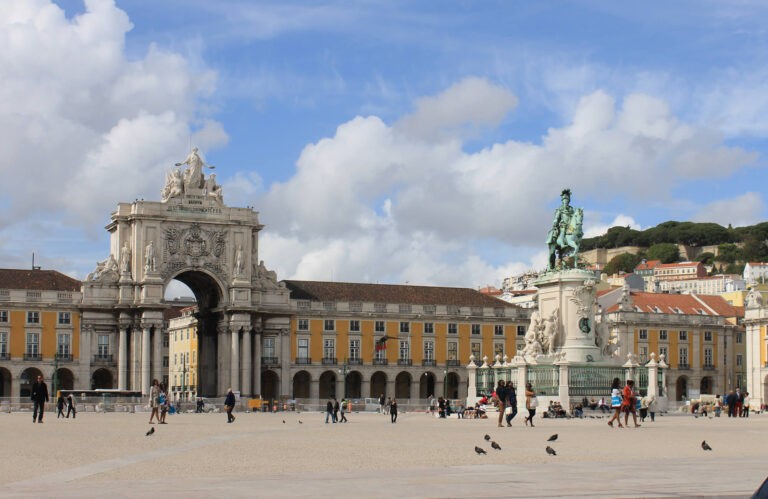
There is no better place in Lisbon to soak up the local atmosphere than Pedro IV Square, Lisbon’s most famous and truly the main square of the Portuguese capital. Located in the elegant Lower Town of Pombaline, in central Lisbon, Rossio has been the city’s main gathering place since the Middle Ages. During the Inquisition of the 16th century, the square served as a venue for public executions. Today, it is a place where friends meet to enjoy a drink in a cafe or bar before visiting the National Theatre, located on the north side of the square.
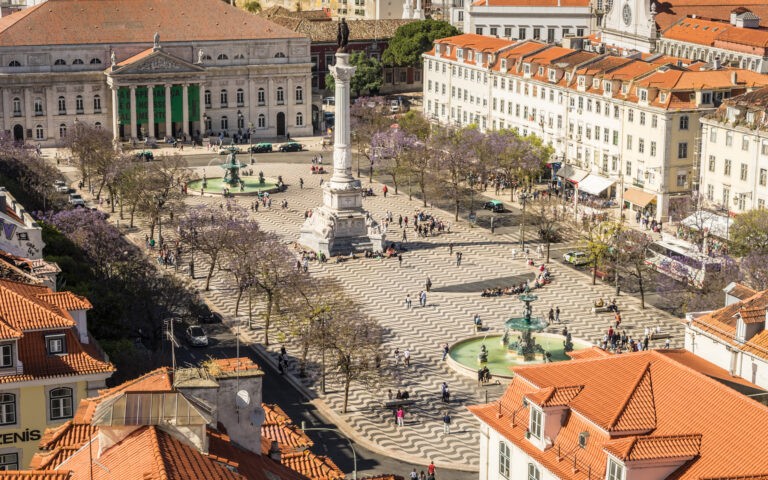
The Santa Justa Elevator, located in the city center, offers visitors a breathtaking view of beautiful Lisbon. Built in 1902, the “elevador” was designed by Raoul Meunier, inspired by the famous tower in Paris, which was created by his colleague Gustave Eiffel. A wrought iron tower lifts passengers to a platform where a walkway leads to the ruins of the Carmo Monastery, a Gothic church that was partly destroyed in the great earthquake of 1755. In addition, visitors can climb the stairs to the top of the elevator structure to enjoy the view of the entire Baixa area.
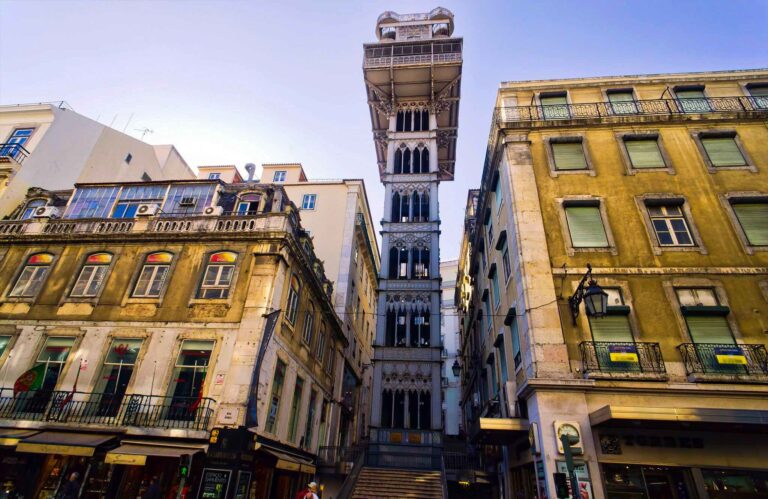
The oldest quarter of the historic Lisbon, the Alfama district is littered with architectural landmarks, including those that date back to the city’s Moorish past, but the charm of the area’s winding streets, delicious eateries and fado clubs makes Alfama impossible-to-skip destination. With bars and fado clubs, Largo do Chararis de Dentro is the best place to enjoy traditional Portuguese folk music. The square is just one of many viewpoints dotted around this hilly area. For expansive views of the Alfama and the Tagus River, visitors head to Lisbon’s original Moorish gateway, Largo das Portas do Sol.
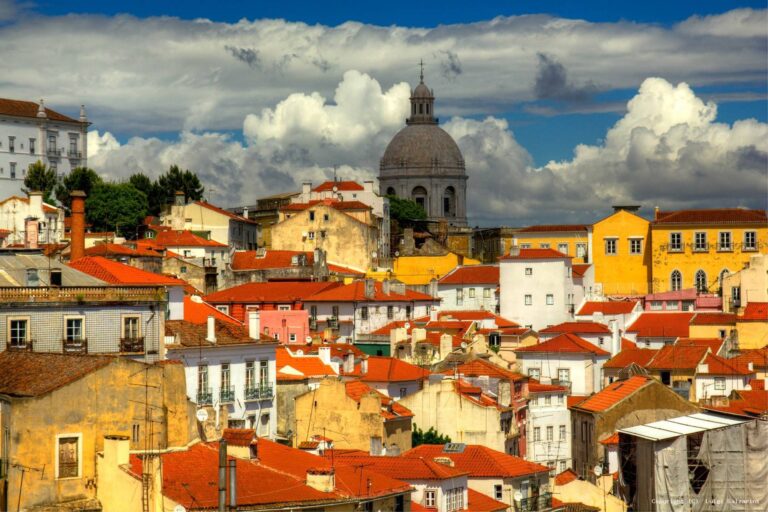
One of Lisbon’s oldest treasures, São Jorge Castle (or Saint George’s Castle) is located on a hilltop in the Alfama district. The castle recalls the period when Lisbon was under the rule of the Moors, but this place was fortified centuries earlier, when the Romans and Visigoths were also in power. After the expulsion of the Moors in 1147, the Portuguese used the castle as a royal residence until the early 16th century. Today, the royal chambers house a museum with archaeological exhibits. Climbing the castle ramparts is a must-do in Lisbon as the views from the parapets and battlements are breathtaking.
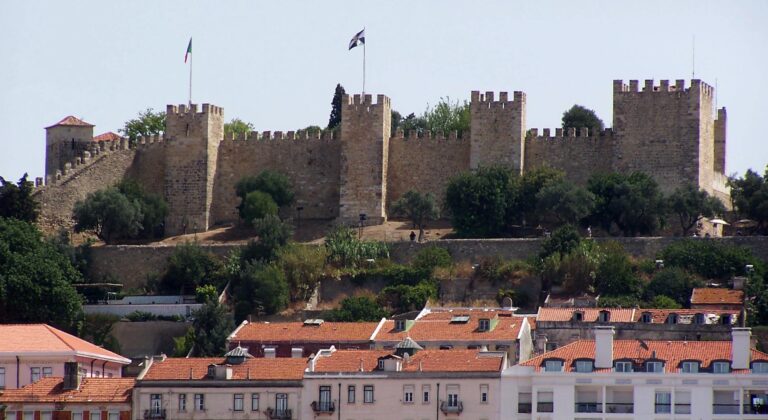
With both Gothic and Moorish influence, the striking Manueline architecture of the Jeronimos Monastery makes it a must-see for anyone visiting Lisbon. Located in the coastal area of the city of Belém, the grandiose complex was built in the 1500s to commemorate the discoveries made by Portuguese explorers. Built primarily of golden limestone, the monastery is a masterpiece with carved stone portals, latticed ceilings, and openwork windows on slender columns. In the nave of the church is the tomb of Vasco da Gama, whose travels to India made Lisbon a rich maritime city.
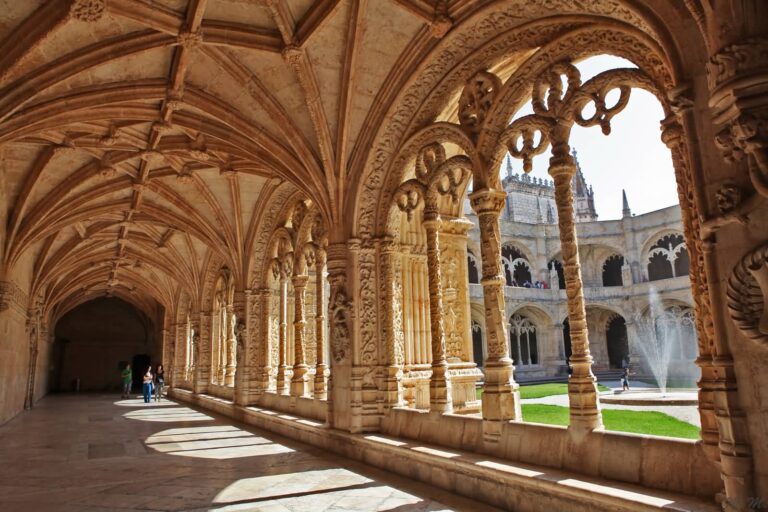
Belém Tower, also known as Saint Vincent’s Tower, is located on what was once an island on the Tagus River. It was built in 1515 both to protect Lisbon from invaders and to receive the city’s friends. A four-story limestone tower built during the Age of Discovery is connected to the bastion. In the bastion, there was room for 17 cannons that could fire at long distances. The statue of Our Lady of Safe Return Home, designed to protect sailors on their voyage, faces the river.
